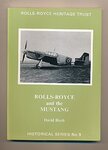P-39 Expert
Non-Expert
Agree, and would be interested to hear from people who think the chin radiator was high drag.Why do people automatically assume the radiator on the P-40 was so bad?
Or assume that all ventral radiators were good?
The P-40 was fitted with several different radiator set-ups, While test results may be lacking we can note that they never changed the production versions.
The radiator was "hidden" aerodynamically and increased frontal area only slightly, and that could have been reduced further IMO.
The chin installation was supposedly tougher in combat because the coolant and oil radiators were just below the engine.
And the P-40 was about the only plane tested in wwiiaircraftperformance.org that didn't overheat.
All in all a very good radiator installation IMO.


